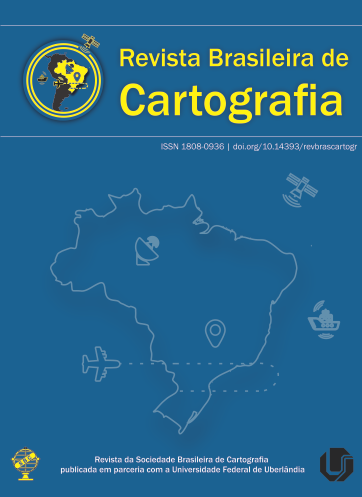The Role of Covariances in the Deformation Analysis Applied to Geodetic Monitoring of Structures
Main Article Content
Abstract
: In recent years, there were huge scale accidents due to dam failure in Brazil, which has motivated the increase in researches related to deformation analysis applied to geodetic monitoring. In displacements analysis, it´s considered isolated coordinates of the object points or the positional resultants of the points, but the covariance between the coordinates should be taken in account. However, don’t employ the coordinate’s covariances can result in both false positives and false negatives in relation to the more realistic scenario, that is, the multivariate case. In this way, this study presents simulated and real data examples that demonstrate the importance of covariances in the deformation analysis applied to geodetic monitoring. The examples analyzed demonstrate the occurrence of both false positives and false negatives of the univariate congruence test in relation to the multivariate congruence test. Thus, in order to make decisions in a more realistic scenario, it is recommended to apply deformation analysis in a multivariate context.
Downloads
Metrics
Article Details
Authors who publish in this journal agree to the following terms:
- Authors retain copyright and grant the journal right of first publication with the work simultaneously licensed under a Creative Commons Attribution License that allows others to share the work with an acknowledgment of the work's authorship and initial publication in this journal.
- Authors can enter into separate, additional contractual arrangements for the non-exclusive distribution of the journal's published version of the work (e.g., post it to an institutional repository or publish it in a book), with an acknowledgment of its initial publication in this journal.
- Authors are permitted and encouraged to post their work online (e.g., in institutional repositories or on their website) before and during the submission process, as it can lead to productive exchanges, as well as earlier and greater citation of published work (see "The Effect of Open Access").





